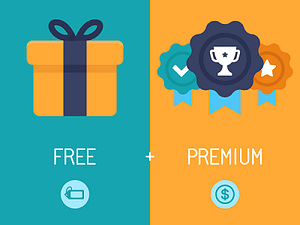You’ve just produced a new app or online tool and the excitement about your product launch is mounting. You can’t wait to hear how thrilled everyone will be with your software.
But then, reality hits. Sure, your new product is fabulous, but can it support you? Are you offering it purely as a gift to humanity, or are you in business to make a living? Unless you’re willing to just give it all away, sooner or later you’ve got to face the music.
Consider the Choices
So now you have to make a crucial choice. Options for monetizing any digital product or service remain limited. Though the web is now decades old, we still are puzzling over the best ways to make online tools truly sustainable.
A software company can profit from an application or service in the following ways:
- Charge a fee upfront. However, with competition from mobile app stores, this is increasingly difficult because people don’t like to pay unless they can try out the software first.
- Offer a free trial. Unfortunately, the same limitation applies here: giving your credit card info to a company feels dicey unless you already know you love the product. Even assuring prospects they can “cancel anytime” fails to overcome that reluctance. Sometimes a free trial is offered without needing to submit credit card data, but will enough people convert to the paid product at the trial’s end?
- Contract to display ads from other companies. But we all know how horribly annoying ads can be. Maybe you can offer a paid version that is ad-free … but will enough of your subscribers opt for that?
- Many developers go for the fourth option: freemium pricing. A freemium is a forever-free version of your product with minimal features. A premium version is available with more bells and whistles, for a fee.
Many developers may find the freemium model attractive, but it must be designed with extreme care, heavily guarding your costs and company resources along the way. I see too many examples of software companies suddenly caught in the realization that the way their freemium is designed won’t work for the long term.
Deciding How to Configure Your Freemium
You might be really proud of your 100,000 users, but such vanity metrics still don’t translate into a profitable bottom line. For example, is your staff spending countless hours servicing “customers” who will never pay?
Yes, a freemium allows you to attract a user base without expending resources on costly ad campaigns or a traditional sales force, but you need to set up your freemium with great care. You have to make sure the math works to produce a profit via your paid model. With industry reports showing Freemium models yield an average of 2-4% conversion to the paid product, it is crucial that you map out your business plan wisely.
It’s not a good idea to give away the fully tricked-out app for a while and then skinny it back when you’re ready to offer levels of payment. There are big risks involved in removing features that used to be included in the freemium. No one likes having privileges taken away through no fault of their own! Users may revolt when asked to pay for things they are accustomed to getting for free.
It all comes down to who is your ideal paying customer. Spend quality time considering the behaviors of the type of person you think would benefit the most from using your app. Then, structure your product and marketing with a close focus on that “ideal” type. While offering the freemium as a tool for anyone, center your marketing and sales on those who are most likely to use your software professionally, therefore needing the complete, paid version.
Read Your Market Accurately
Remember that one of the chief purposes of a freemium is to attract new users. If you aren’t getting users, perhaps the free offerings are not compelling enough or perhaps the value of your product is not clear enough. If you’re generating lots of free users but few people are paying to upgrade, you may have the opposite problem: your free offerings are too generous.
I hope you can see how the design and structure for distributing your app is a delicate balancing act. Consider all your costs. What are the hard costs associated with the free version? It is especially important to remember that people will find creative ways to use your system in ways you may not have intended. Even little things like SMS/texting and bandwidth transfer costs can add up quickly. Does the paid version require an over-inflated cost to make up for all of the freemium users?
It’s an enormous effort to code and produce any software application or service, so I understand why caution in rolling out your new product can seem frustrating. If you make careful decisions from the very beginning, you won’t have to worry about missing the boat when it comes to sustainable business for the long term.
The key to gaining adoption and hitting your growth targets is nailing your pricing appropriately by basing it on the value being produced. Always make sure all hard costs of operating your service are covered. A poorly executed freemium strategy could backfire and drive customers away from your offering and back to your competition, so you want to make sure you do it right the first time.
On the flip side, you may also find that some customers are skeptical about free products because they have learned the hard way that free does not mean free from risk.
Conclusion
There are always many things to consider with regard to licensing applications, and choosing a freemium licensing strategy only adds to that list. If you’re currently using or considering using the SoftwareKey System, and you have questions about freemium licensing for your software, our team is just a click or a call away.

